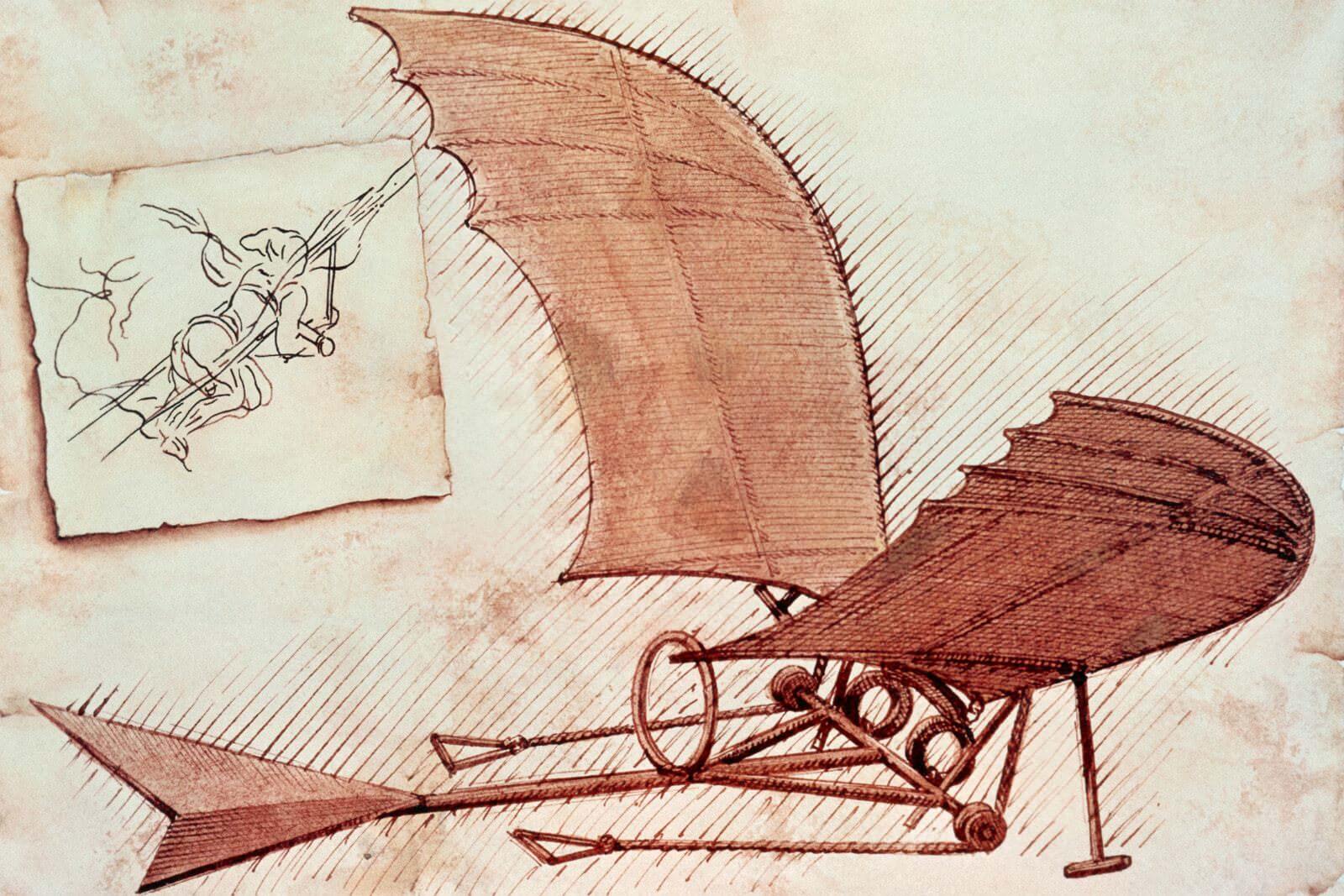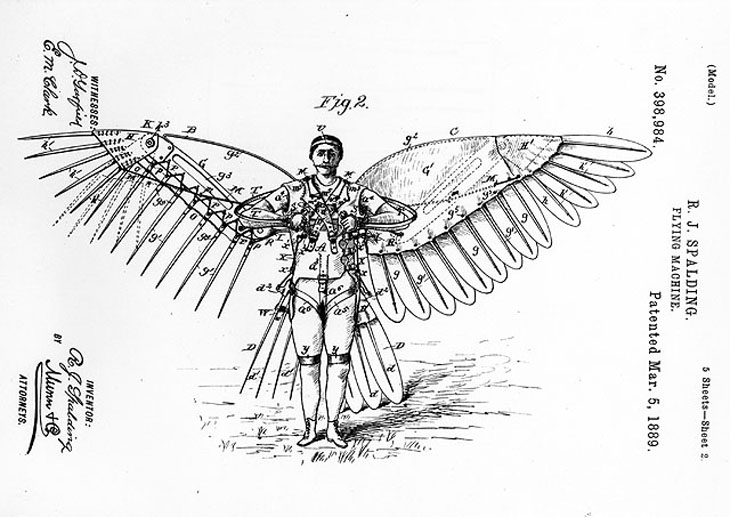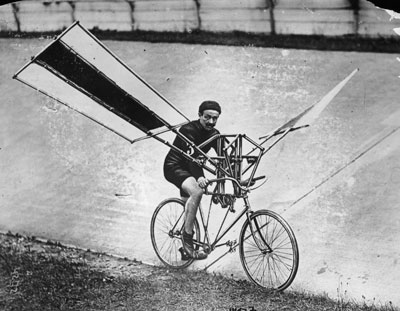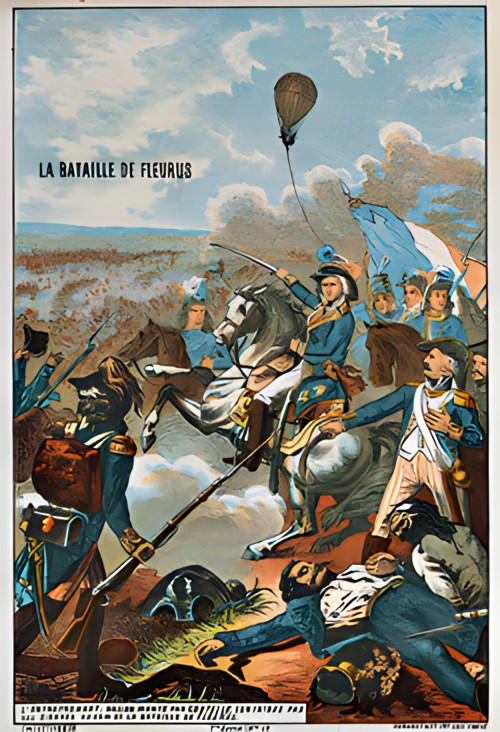Inspired by birds, humans have long dreamed of flying. Early attempts used a flapping motion, although these proved impossible. For centuries people tried, yet failed in flight. However, experience and knowledge from these attempts ultimately helped make flight possible.
A Dream to Fly

Leonardo da Vinci's Flying Machine: Image courtesy of LeonardoDaVinci.net

R. J. Spalding's "Flying Machine" 1889: Image courtesy of Smithsonian Air and Space
"Once you have tasted flight, you will forever walk the earth with your eyes turned skyward, for there you have been, and there you will always long to return."
~ Leonardo da Vinci

A bicycle with wings, 1900: Image courtesy of How Stuff Works

Illustration of the Battle of Fleurus, 1794: Image courtesy of Military History Now
"A lighter-than-air aircraft, or aerostat, is a vehicle that achieves flight by creating buoyancy or lift by using lifting gas that is lighter than air. This method contrasts with a heavier-than-air aircraft, or aerodyne, which generates lift with the flow of air over an airfoil"
~ National Aviation Academy
People continued to attempt flight but eventually learned floating. The first manned balloon flight in history was made in France in 1783. The hot air balloon used heat from a fire at the base to raise the balloon into the sky. These balloons were used for observational purposes, and France even made a special "balloon unit." The use of balloons continued into the Civil War, helping to give a bird's eye view of the enemy. The observational power of being above ground was realized, although the capabilities remained limited due to difficulties controlling the balloons.
"Those [Civil War era U.S.] balloons were very limited in their deployment capability. In other words, they're gonna go where the wind goes, and so balloon observation was certainly a beginning, but it was a small step."
~ Steve Loranger, Naval Aviator and Aerospace CEO
While the balloon demonstrated the potential of military use in flight, heavier-than-air flight remained an untapped frontier that scientists began working hard to achieve.